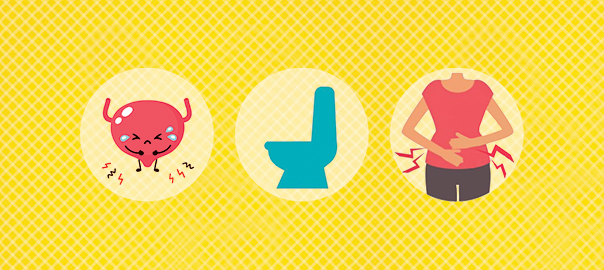Medically reviewed by Dr. Unsa Mohsin.
Urinary tract infections (UTIs) just so happen to be the most frequent bacterial infection amongst women and the third most common type of infection, behind only to respiratory and intestinal infections. Many of us may also be familiar with the problems of recurrent/frequent UTIs, so if you also suffer with recurrent infections, here are few things you should know.
What is a Chronic Urinary Tract Infection?
Chronic urinary tract infections (UTIs) are infections of the urinary tract that either don’t respond to treatment or keep recurring. They may either continue to affect your urinary tract despite getting the right treatment, or they may recur after treatment. Many women who suffer through UTIs experience recurrent infections, which mean they get two or more infections in six months, or three or more in one year.
Your urinary tract is the pathway that makes up your urinary system. It includes the following:
- Your kidneys filter your blood and generate body waste in the form of urine.
- Your ureters are tubes that carry urine from the kidneys to the bladder.
- Your bladder collects and stores urine.
- Your urethra is the tube that carries urine from the bladder to the outside of your body.
A UTI can affect any part of your urinary system. When an infection only affects your bladder, it’s usually a minor illness that can be easily treated. However, if it spreads to your kidneys, you may suffer from serious health consequences, and may even need to be hospitalized.
What are the symptoms of a Chronic Urinary Tract Infection?
The symptoms of a Chronic UTI affecting your bladder include:
- Frequent urination
- Bloody or dark urine
- A burning sensation while urinating
- Pain in your kidneys, which means in your lower back or below your ribs
- Pain in your bladder region
If the UTI spreads to your kidneys, it might cause:
- Nausea
- Vomiting
- Chills
- A high fever, over 101°F (38°C)
- Fatigue
- Mental disorientation
Who is at risk for a Chronic Urinary Tract Infection?
Women
Chronic UTIs are most common in women. This is due to two different aspects of basic human anatomy. First, the urethra is close to the rectum in women and second, a woman’s urethra is shorter than a man’s. Due to this, it is easy for bacteria from the rectum to reach the urethra and it also has a shorter distance to travel to get the bladder.
Men
Men are much less likely than women to get a UTI, either acute or chronic. The most common reason men develop chronic UTIs is an enlarged prostate. When the prostate is enlarged, the bladder does not empty completely which can cause bacteria to grow.
Menopause
Menopause can cause similar problems in some women. Menopause causes hormone changes that can cause changes in your vaginal bacteria. This can increase your risk of chronic UTIs. There are also other risks for UTIs in older adults.
How is a Chronic Urinary Tract Infection Treated?
Medications usually involve a course of antibiotics delivered over one week, which is the primary treatment for UTIs, followed by Urine tests to check for infections. However other natural remedies involve drinking plenty of cranberry juice and water to help flush out the bacteria in your urinary tract. Placing a heating pad or hot water bottle on your bladder may also help to ease the pain.
UTIs suck, but you shouldn’t have to sit there and suffer.
Taking proactive steps to be more in control of your wellbeing is always a good idea, and these steps will go a long way towards keeping your body healthy. Trust me an awkward conversation with your doctor is a small price to pay to prevent feeling like your entire body is on fire every time you have to pee.
Guest Credits: Dr Shayan Imran




